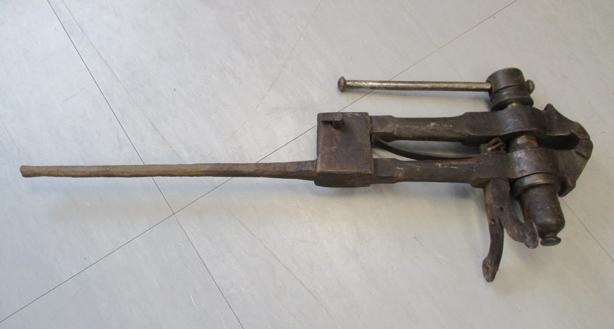Workbench vice

Fundamental in the manufacture of any iron product, historically the workbench vice has been closely related to our industry, having been an indispensable tool in our factories since the early days of the arms profession; its use subsequently extended to all kinds of factories. This tool consists of an iron structure with a base and articulated handle. In gunsmithing it is used to clamp parts like butts and side plates to enable work to proceed on them, providing an effective grip for mechanical operations such as sawing, perforating, milling, filing, marking, etc. This particular piece comes from the small gunsmithery formerly found in Eibar’s Calle Sostoa.
This workbench vice is unquestionably one of the numerous examples of our industrial heritage, a heritage which gives us a better understanding of our identity as a town while helping to preserve our historical memory with its traditional links to the iron and steelmaking industry.
Today, thanks to a new awareness and appreciation of industrial heritage, initiatives are appearing such as “The Iron Route”, a cultural cross-border itinerary promoted by the Cultural Routes of the Council of Europe Programme. Consisting of five neighbouring regions: Andorra, Catalonia, Ariège, Aquitaine and the Basque Country, the itinerary follows small territorial routes with iron as its common thread, helping to create our regional identity and cultural landscape. .
We invite you to visit our museum and to enjoy this interesting itinerary demonstrating the value of our region’s iron culture and tradition, as well as elements connected to it, such as mines, ironworks, archives, and architecture.

